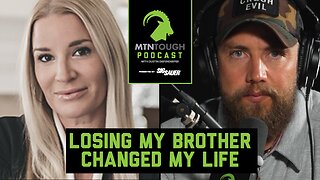Premium Only Content

Paying Off Reverse Mortgages
A reverse mortgage, typically available to homeowners aged 62 and older (55+ in California), allows them to convert part of their home equity into cash without selling their home. Understanding the different ways a reverse mortgage can be paid off is crucial for financial planning and to avoid potential pitfalls. Here are the primary methods:
1. Selling the Home
The most common way to pay off a reverse mortgage is by selling the home. Once the house is sold, the proceeds are used to repay the loan balance, including interest and fees. If the sale amount exceeds the loan balance, the remaining equity goes to the homeowner or their heirs. This method is often chosen when the homeowner no longer needs the property or wishes to downsize.
2. Refinancing
Refinancing involves taking out a new loan, often a traditional mortgage or another reverse mortgage, to pay off the existing reverse mortgage. This can be beneficial if interest rates have dropped or if the homeowner wants to switch to a loan with better terms. Refinancing requires sufficient income and creditworthiness, which may be challenging for some senior homeowners.
3. Using Other Financial Resources
Homeowners may use other financial assets, such as savings, investments, or assistance from family members, to pay off the reverse mortgage. This approach helps retain ownership of the home without taking on new debt. It’s essential to evaluate the impact on overall financial health before using this method.
4. Death of the Borrowers
When the last surviving borrower passes away, the reverse mortgage becomes due. The heirs typically have several options: they can sell the home to pay off the loan, refinance into a new mortgage, or use other financial resources to repay the loan. It’s important for heirs to understand these options to make informed decisions that align with the family’s goals and circumstances.
5. Heirs Paying Off the Loan
Heirs can choose to pay off the reverse mortgage if they wish to keep the home. They can use their funds or obtain a new mortgage to cover the loan balance. This option is important for families who want to retain the property for sentimental reasons or as part of their legacy.
Importance of Knowing the Choices, Understanding these options is crucial for several reasons:
Financial Planning: Knowing the available choices helps homeowners and their families plan for the future, ensuring that they are prepared for any eventuality.
Avoiding Foreclosure: Failure to repay the loan after the homeowner moves out or passes away can lead to foreclosure. Awareness of repayment options helps prevent this outcome.
Maximizing Equity: Different repayment methods can affect the amount of equity retained. For instance, selling the home may yield excess funds, while refinancing might offer better loan terms.
Family Legacy: Knowing the options allows families to make informed decisions about whether to keep or sell the home, aligning with their long-term goals and values.
In conclusion, being informed about the ways to pay off a reverse mortgage empowers homeowners and their heirs to make the best financial decisions, ensuring peace of mind and financial stability.
-

Dear America
11 hours agoMassive Cyberattack Against Elon's X Sparks Widespread CONCERN! + More Attacks On Tesla Vehicles?!
15.4K3 -
 LIVE
LIVE
Wendy Bell Radio
5 hours agoOver The Target
12,993 watching -
 LIVE
LIVE
Bitcoin Policy Institute
1 hour agoBitcoin for America
510 watching -
 LIVE
LIVE
2 MIKES LIVE
1 hour agoTHE MIKE SCHWARTZ SHOW with DR. MICHAEL J SCHWARTZ 03-11-2025
326 watching -
 34:43
34:43
Degenerate Jay
23 hours ago $2.60 earnedAssassin's Creed Was Always Anti-Religion?
21.5K5 -
 6:41
6:41
Silver Dragons
19 hours agoCanadian Silver Maple Leaf Coins - Dealer Reveals Everything You NEED to Know
14.3K2 -
 8:42
8:42
Dangerous Freedom
17 hours ago $2.07 earnedThe M&P Competitor SHREDS—But Did Smith & Wesson Screw It Up?
18.8K2 -
 1:12:50
1:12:50
MTNTOUGH Fitness Lab
17 hours agoSTOP Living in Fear: Why Some People Rise From Tragedy AND OTHERS DON'T | Ryan Manion
13.7K -
 8:03
8:03
Alabama Arsenal
1 day ago $0.86 earnedWoox Bravado | Modern Features Meet Timeless Style
20.1K2 -
 2:49:10
2:49:10
TimcastIRL
14 hours agoElon Musk Says X Hit By MASSIVE Cyberattack From Ukraine, Rumble Hit Too w/Ben Davidson| Timcast IRL
263K138